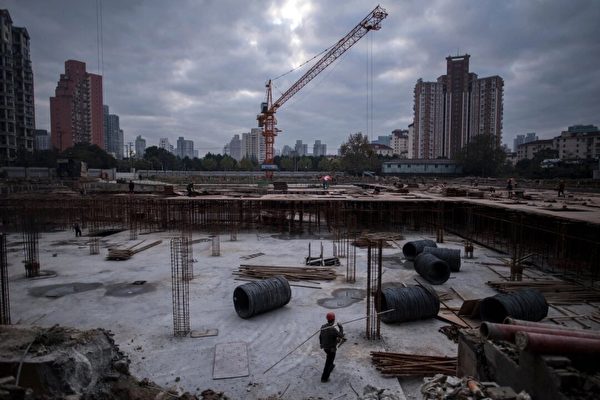Xi Jinping and the Chinese Communist Party once again failed to meet their goals.
Despite holding multiple meetings and delivering speeches, the Party leadership has provided little substantive help in addressing the various severe economic challenges China is facing. These challenges include a spreading real estate crisis, insufficient exports, youth unemployment, low consumer confidence, and private enterprises reluctant to invest.
The specific policies proposed by the CCP to address the real estate crisis are woefully inadequate, characterized by mere tinkering.
For years, government authorities have neglected the economic and financial consequences of the real estate crisis. When they finally took action, it was only through two modest moves.
First, the People’s Bank of China pledged to further cut interest rates on top of existing ones. Strangely, after making this commitment at the CCP’s two sessions, the central bank decided to keep rates unchanged at its meetings, casting doubt on the effectiveness even if they lower rates in the coming months.
In the past 24 months, the People’s Bank of China has cut interest rates five times, yet the real estate market continues to decline. Notably, housing sales volumes in the first two months of this year dropped by 33% compared to the same period last year, with new construction projects decreasing by 30%.
Given this, one can’t help but question the effectiveness of this policy.
Recently, Beijing launched a program called the “white list,” requiring local governments to identify real estate projects mired in debt crisis, with state-owned banks providing financing after reviewing said projects, aiming to stabilize the real estate market.
In principle, this isn’t a bad idea and holds more promise than the People’s Bank of China slightly lowering interest rates further. If the CCP had implemented such a plan when the crisis first emerged two years ago, it might have been more effective as it hadn’t yet eroded confidence in real estate investment prospects and overall financial arrangements. If not for its small scale, it might have been helpful. So far, the $17 billion designated for the “white list” is only slightly higher than 5% of the $300 billion debt Evergrande couldn’t afford announced in 2021, not to mention subsequent collapses of other major real estate firms.
Apart from these minor actions, it appears the CCP leadership has shifted focus away from the real estate issue, at least judging by the articles in the two sessions. This is regrettable as China’s real estate problem is the root of other severe economic challenges, dampening finance, hindering housing sales and construction, and causing a decline in real estate values. As real estate is the primary asset for most Chinese people, the loss of value in this sector has deeply eroded household wealth and is a major factor in dampening consumer confidence and willingness to spend, significantly dragging down the overall economy.
The CCP government has not recognized these economic interactions or taken policies beyond the aforementioned minor actions, choosing instead to shift the discourse simplistically. At the two sessions, leaders turned a blind eye to the real estate crisis and the shrinking of Chinese household wealth, focusing instead on boosting the manufacturing sector. They claim that China will achieve a “new leap” in so-called “industrial system modernization” through “scientific education” in this area. Speakers emphasized artificial intelligence, new energy vehicles, hydrogen energy, bio-manufacturing, commercial aerospace, new materials, and innovative drugs.
Prioritizing modernization is not wrong, but there are still issues. Firstly, the resources allocated for this grand effort are insufficient to bring about significant change. China allocated 104 billion yuan ($15 billion) for modernization and training, a negligible amount for an $18 trillion economy.
More importantly, Beijing has not put forth any specific proposals on how to drive this change. Premier Li Keqiang’s speech illustrated this point. According to the official translation of his speech, China will “guide industrial innovation with technological innovation.” This is meaningless; it’s essentially saying the country will innovate through innovation. This is not a plan but a logical loop.
This new emphasis is also absent from the CCP government’s sole major policy proposal: infrastructure spending, a stimulus policy implicitly accepted by China for decades. The plan allocates 3.9 trillion yuan ($541 billion) in special local government bonds and issues 1 trillion yuan ($139 billion) in ultra-long-term special national bonds for use in constructions in other areas.
Thus far, the CCP has not disclosed which specific projects will receive this funding. The term “ultra-long-term special national bonds” indicates planners don’t expect returns anytime soon. Proposals for large-scale projects akin to the scale of the Three Gorges Dam have emerged. The Three Gorges Project began in the 1990s and only began operating in 2015.
Regardless of whether infrastructure spending is linked to driving innovation, a question remains: where will all these new innovative manufacturing industries head? Since the CCP seems determined to avoid tackling issues of restricted household wealth and consumer spending, the only viable way out would be through exports. However, China faces efforts by American, European, and Japanese companies to decouple their supply chains from China, as well as increasing hostility toward Chinese trade from Washington, Brussels, and Tokyo.
Faced with all these challenges and unresolved matters, the CCP has failed to deeply consider its plans, neglected to realize the interconnected nature of various aspects of the economy. Even a strong centrally controlled state like Communist China cannot develop a sector without considering other parts of the economy. This flaw all but ensures that China’s economic and financial problems will persist for some time.
This translation and rewritten version is based on the original article that first appeared in the Chinese-language publication “Dajiyuan” on April 16, 2024.

